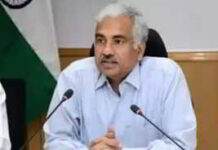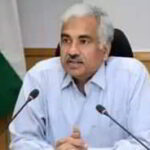Turnout conundrum: On stocktaking on voter participation
The low voting percentage in many States is a cause for concern
With just one phase left in the general election 2024, a stocktaking exercise on voter participation across the country reveals a significant dampening in turnout in this set of elections in comparison to the 2019 and even the 2014 general elections. There are State and regional level variations — voters in the east, northeast and many in the south typically voted higher than those in west, central and north India. Yet, barring some exceptions such as Telangana and Karnataka, where voter turnout registered a small increase from 62.8% to 65.7% and 68.8% to 70.6% among others, there has been a general decline in voting across States in 2024. As an analysis in The Hindu revealed, not only was there a dip in turnout in percentage terms, but there was also a decline in voter turnout in absolute terms in 132 of the 485 constituencies that went to polls in the first six phases. The high number of seats that encountered a dip in voter participation is unprecedented since the latest delimitation that was conducted prior to the 2009 general election. A closer look at the numbers shows that there was a significant bump in the total electorate (eligible voters above the age of 18 years) in 2014, and slight increases in 2019 and 2024. But it was only in 2024 that voter turnout dropped dramatically in many constituencies.
This drop in turnout can possibly be explained by political factors. Was there lower enthusiasm to vote in States which did not feature a strong contest among the parties in the fray? Does this explain the relatively low turnout in Gujarat (60.1%, a 4.4 point drop from 2019), where the Bharatiya Janata Party is in a dominant position or Kerala (71.3%, 6.6 point drop) where both the main rivals, the Left and the Congress along with their allies, are part of the INDIA bloc nationally? Has inter-State migration been a factor which possibly explains the low turnout in the northern and central States? Bihar, for example, has seen a significant gender gap, with women voters far outnumbering men in participation in percentage terms. Have the heatwave conditions contributed to electors deciding to stay at home? These are questions that deserve a closer look at data and the Election Commission of India must play a role in answering some of them. India has always enjoyed a higher degree of participation relative to other electoral democracies and a significant drop, as seen this year, is cause for concern. Voter apathy over the longer term can undermine the democratic process itself. People get the government they deserve when they vote, and the government they do not deserve when they do not vote.















